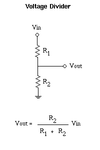Follow along with the video below to see how to install our site as a web app on your home screen.
Note: This feature may not be available in some browsers.

thanku all.. bt i also want to monitor battery capacity.. tht can b done by finding current - ampere hours..
Thanks for the reply. I forgot to mention that i need exactly 0.1 ohm shunt for 5V drop @50A. The shunts for ammeter has a very low resistance like 0.005 and like that. So if i m going to use ammeter shunt then i have to put a cut in it until it become 0.1 ohms. also i have heard that if shunt temperature goes above 150 degrees then its resistance changes permanently. so by putting a cut in it will increase the resistance but will it increase its temperature? i think the gauge at that cut will obviously be low but also temperature at that point will be high also.
Thanks for the reply but i m not building a heater. I m building a big battery charger. I m fast charging SLA batteries. Some people here are still sticking with old concepts of battery charging but there are new fast charging algorithms on the web now. previously i made 12 amp ,3 stage charger and i experimented it on a 12 Ah battery for 6 months. battery is still healthy. Now i need shunt to have precise amount of constants current that is why i can't use those golden type 0.1ohm resistors.
https://www.edaboard.com/threads/217606/
Have a look here and u will understand. and comment there for my solution. thanks for your time.